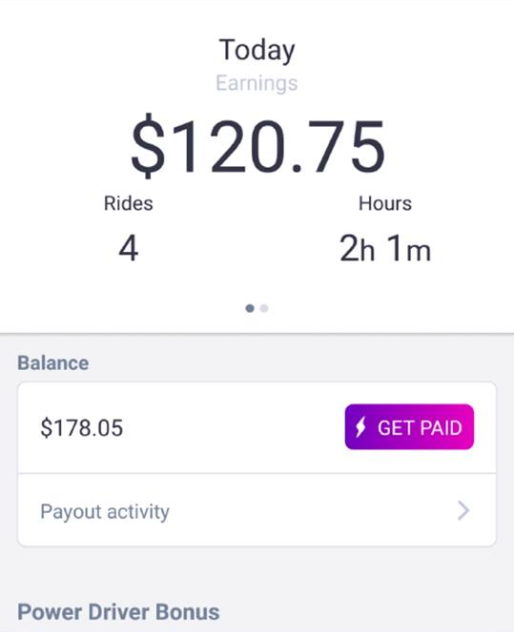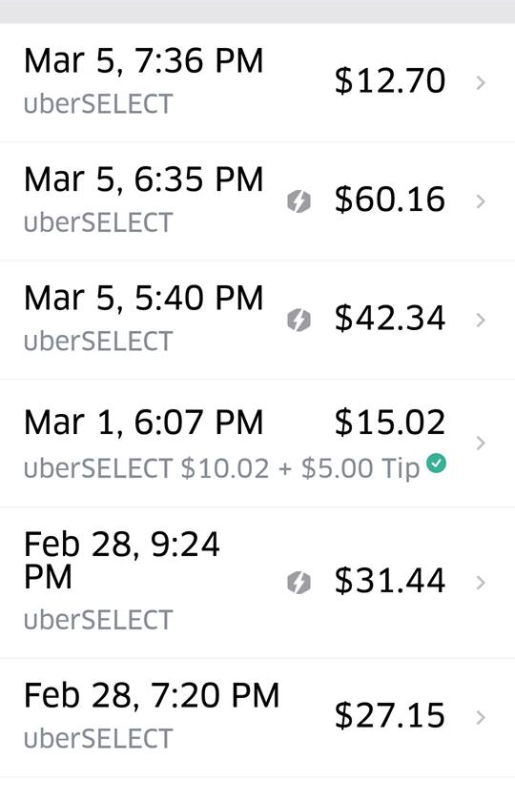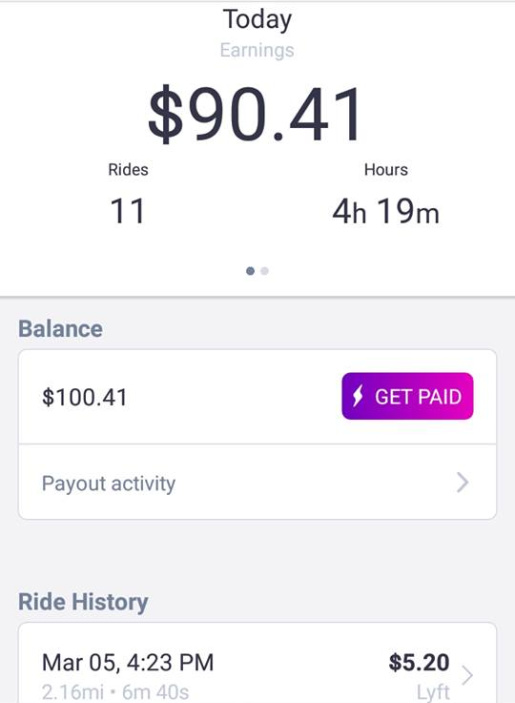Perhaps one of the most interesting issues that have arisen from the MIT article about drivers income is not the fact that MIT was correct (but presented the findings incorrectly), or that Uber has suffered from this recent mistake made by such a prestigious establishment. The real issue that comes into focus is what do Uber drivers actually earn, what kind of drivers are there, and in truth, how does the car price impact the income.
While Mathematics is an exact science, there is sometimes room for what is termed fuzzy logic. However, this is not the case when estimating income. The factors and variables used to evaluate an income are straightforward. While there might be some " fuzzy logic" issues to deal with when factoring in expenses for tax, the basics of a car price, cost to maintain and to drive expenses, in general, are all quite straightforward.
So, what went wrong?
In mathematics, especially in accounting, there are a number of ways to reach a figure or to prove an argument. 1+1=2, but it can also be written as x/y+z-q=d*e+a-b. Yup, back to grade III algebra. What the MIT researchers did wring was start off by using estimations and generalizing figures. In reality, the income an Uber driver makes is quite simple, the only differences between the gross income and the net income are in how the expenses are tallied up.
So, here is a comprehensive look at what MIT should have done. This model was prepared by an industrial engineer with a Ph.D. in business admin.
Income is a ride fare fee paid to Uber by the rider. The driver receives the income less Uber fee's when making this into a mathematical model it would look like this:
- Income (I) – Uber Fees (U) = Gross Income (GI) (Note that Uber fees are an expense)
- Extra income from Tips (T) would be GI + T
- Any bonuses, incentives, and other fee incorporated income would be part of the income (I).
- There is no point in breaking down "GI" since the gross income is not being questioned, however, to understand what the income per mile and per hour is, each and every driver should divide the total number of miles driven from the start of a shift to the end of a shift, as well as the hours, and divide the income by these figures.
- Miles (M) per shift cost = GI/M, where M is for periods 1, 2 and 3.
- Hours (H) per shift cost = GI/H, where H is for periods 1, 2 and 3.
Expenses are what we deduct from the income to receive a net income for tax purposes; it is also a net income for drivers to estimate what they take home. When discussing car purchase price, the issue becomes sticky, since cars are not usually bought specifically for rideshare driving, and as such, a car is already in possession for the rideshare time. However, since this is a business, car purchase price as well as depreciation should be included. What is the difference between the two?
A car purchase price is what you paid for the car, or what you are paying in installments, and is based on the car purchase value plus interest. If you buy a car in one payment, then you should calculate the cost of the car for a seven-year period. This means you take the overall purchase price and divide it into seven years. You then use this value as your annual addition to expenditure, which will tally in with the expected 7-year depreciation factor. If you lease a car, then the monthly installments will be used as the car cost factor, as well as a bank loan payment if you borrowed the money to buy the car. The car down payment must be added; this is done by dividing the down payment into 12 months and adding that figure to the monthly expenses. Down payments are not extended over seven years.
Depreciation is the sales value of the car every year, where different models and makes depreciate in value by a minimum of 10% per annum, with the first years depreciating up to 20% for a new car. This means that the moment you buy a car, it depreciates in the value set by the market trading price. Kelly's Blue Book is considered to be the market standard for finding out a cars market value. The loss per annum which is the difference (delta) between the start value and the end of year value (depreciation) should be added as an expense.
Expenses include:
- Split Fare Fees
- Safe Rides Fees
- Misc. Fare Fee
- Airport Fee
- Uber Service Fee (20% or 25% that Uber deducts.)
- Lyft Service Fee (20% or 25% that Lyft deducts.)
- Lyft Tolls
- Mileage
- Car Cleaning
- Passenger Goodies
- Cell Phone Accessories
- Cell Phone Purchase
- Cell Phone Service
- Dashcam
- Inspections
- Parking Fees
- Tolls
- Music and Paid Apps
- Car Mat
- Car Seat Cushion
- Food and Drink
- Car Loan Interest
- Health Insurance
- Oil Change
- Gas
- Car Insurance
- Car Repairs
- Car Loan Payments
- Car down payment
- Car purchase price
- Car Lease Payments
- Car Depreciation
- Site Hosting for your rideshare driving site
- Advertising overheads
- Paid online services for marketing
Now let's look at the big ones;
- A standard UberX car will cost anywhere between $18,000-$30,000 depending on the make, model, and year. Let's take a standard figure, $25,000 and use this as our car purchase price.
- When dividing the car price by seven years into monthly costs, a $25,000 car costs us $298 per month. (All values are rounded to the nearest decimal point.
- If you bought a new car at this price, then the first-year depreciation will be around 20%, which is $5,000 and that is $417 per month.
- So, we now have the car purchase price + the car depreciation cost giving us a total of $715 per month.
I am not going to continue and delve into the other expenses; this will be enough to serve the purposes of this article. Just note that there is only one constant in all these calculations, that is time. The hours are constant, they do not change and as such are the base of all solid calculations. It doesn't matter how many miles you drive; the actual income will be based on evaluating expenses per hour. After all, if a car doesn't drive it doesn't mean it doesn't cost you money. The fewer miles you drive, the more expensive the miles. So, we will stick to hours, which will be the constant for our calculations. You can either set the constant to a lifetime value (ignoring shifts) or a worktime value (per shift).
- There are 8,760 hours in a year (365 days).
- Therefore, the cost of the car per hour, whether you drive or not is going to be $3.42 per hour. (Not per shift).
- Per shift hours will increase the cost and will reduce the income accordingly. The following calculation will be based on an annual cost (constant).
Ride Share Income Averages
Based on standard figures but without factoring in surges and boosts, the average income per ride (when miles and time are average too) are:
- Uber Booking Fee: $1.65
- 30-minute ride, 15 cents per minute: $4.50
- 9 miles ride, 90 cents per mile: $8.10
- Passenger Fee: $23.25
This gives us the "I."
Let's take off the 20% Uber fee, and we are left with $18.60 for the driver. (GI)
If the driver has an average shift of 6 hours a day, five days a week, it means that the driver is driving 126 hours a month. This means that the car costs $3.42 per hour, which is $1.71 per half hour ride. When we take this off the driver's income, we get $16.89, and we have not yet started to factor in the other expenses.
Rather than go into a long debatable expenditure list, the IRS states that this year's expense per mile is set at $0.54. Since these expenses can also be set against a constant such as time, it would be wise to do so, since a cost is a cost, no matter whether it is used directly for a purpose or sitting idle. However, converting this into hours would confuse the issue, since the IRS set it per mile. So, let's take off $0.54 per mile, which is $10.26 for a 19-mile ride, the driver is left with $6.63
OK. We have our calculation, and we can now prove that MIT was not so far from the truth. In fact, I even made it easier on our calculations by dividing the car purchase price into a 7-year hourly cost and not directly linking it into an actual driving cost, which would have made the figure closer to $5.84 leaving our driver with only $3.40 which is exactly what MIT claimed.
Bottom Line: MIT researchers did not need to apologize, their calculations were correct, they just didn't present them in the correct fashion. To conclude, if you want to drive for Uber, don't buy a car that costs $25,000. In reality, most drivers do not factor in the cost of the car; they ignore it. They might factor in depreciation as well as well as use the IRS mile reimbursement figure, but remember, the IRS does not include car purchase price or depreciation in that figure. After all, if they did, then the figure would have to be car specific, where a Rolls Royce would be much higher then a Subaru. Since it isn't the fact remains, Uber drivers don't include the car costs and we do, and this is why we accept the MIT finding, even though, as we stated earlier, they didn't present them properly.



